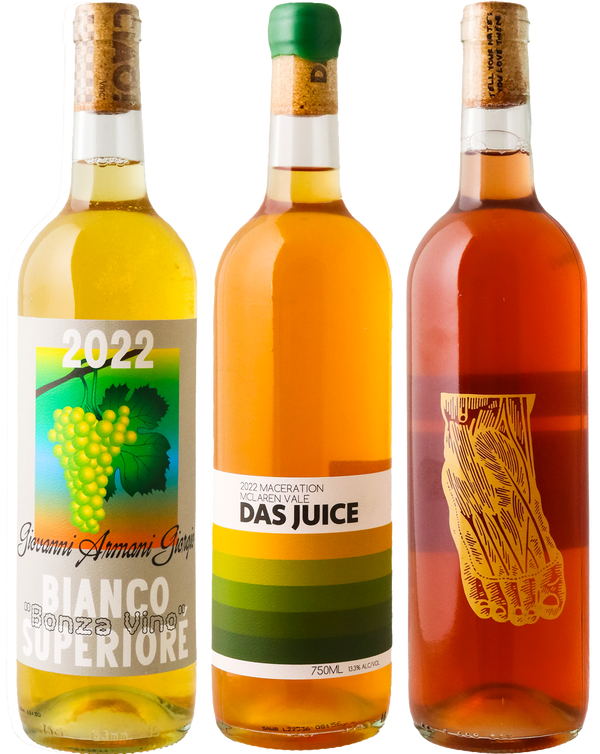
Orange Wine
Orange wine, amber wine, macerated white, skin contact white: a style of winemaking that has rece...Read More...
Orange wine, amber wine, macerated white, skin contact white: a style of winemaking that has recently come into the natural wine drinker’s zeitgeist. Richly coloured, intensely flavoured, friends of food and conversation alike, it isn’t hard to see how consumers have been compelled by the style. Unlike its compatriots that fit within broad wine styles – red wine, pink wine, white wine – it tends to cause a little bit of confusion as to, well, what it is exactly!
Get ready to debunk the three biggest sources of confusion, or myths, around orange wine. A misnomer, orange wine is not made from oranges. Orange wine does not come from the winemaking region, Orange (although they do make orange wine there!). Lastly, orange wine is not by any means a new style – it has been enjoyed and made all over the world for thousands of years, and may in fact be the closest we can get to drinking wines in the style that ancient civilisations enjoyed whilst reclining under an olive tree.
The only thing you need to know when filtering through the magnificent world of orange wines is that they are defined by the process they are made. You take a white variety (Chardonnay, Pinot Grigio, Sauvignon Blanc, Riesling) and instead of pressing the juice off its skins immediately, you let the two stay in contact with one another. White grapes are rich in tannin and aromats, much like red, and the process allows these to impart within the fermenting juice – making for wines coloured like the amber in Jurassic Park which houses the mosquito, to chamomile in colour (light but powerful still). The flavours are the variety under a microscope – deeper fruit, deeper herbs, deeper flowers. The texture is grippier and mouth watering, making friends with spicy food, aromatic dishes, strong cheeses and simpler bites, pasta, pizza; you name it!
The rise in intrigue over the style and the slew of winemakers experimenting with it, has run parallel to the ascent of natural wines, and the two are often mentioned side by side. This is primarily because of the wines grown and made in a small, but specific region nestled on the border of Slovenia and Italy; Friuli-Venezia Giulia. Here, a man named Josko Gravner made wines with a local Fruilian variety named Ribolla for many years, but after a trip to Georgia – what most wine enthusiasts consider the cradle of wine being home to some of the oldest winemaking practices in the world – he discovered a unique method of long-term maceration of white varieties submerged in a fermenting vessel called qvevri, relying on wild yeasts, local, obscure varieties, and all with fruit that had been untouched by chemicals. Taking these ancient processes home, he began to vinify this way, all the while filtering the values of natural wines and orange wines. Championing Ribolla, his natural wines became famed in restaurants throughout Europe for their intensity, richness, food-friendliness, power, lucidity. It was only a matter of time before the style spread throughout the world, each maker putting their own unique stamp on it. WINONA stocks a spectrum of natural orange wines; you can’t go wrong.
Read Less...























